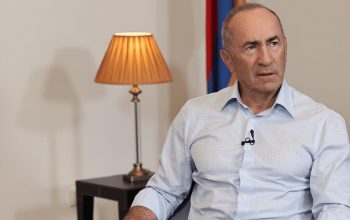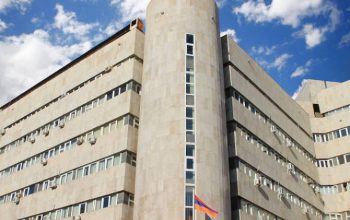Armenia stands at a critical juncture—not only geopolitically, but ideologically and culturally. The most serious threat to the country’s survival is no longer external military aggression or diplomatic isolation, but rather the internalization of a foreign-imposed defeatist narrative by a growing segment of its own population. This narrative has not arisen organically. It has been carefully shaped, cultivated, and deployed by the state apparatuses of Turkey and Azerbaijan, and has found its way into the language, mindset, and social behavior of those aligned with the government of Nikol Pashinyan. The resulting convergence of interests—between hostile foreign powers and segments of the Armenian public—is not coincidental, but strategic. The most revealing commonality between these forces is their obsessive disdain for the Armenian Revolutionary Federation (ARF) and former President Robert Kocharyan. This hatred has become the ideological glue binding otherwise disparate actors in a shared campaign to dismantle Armenia’s national resilience.
The Turkish and Azerbaijani governments have long viewed Armenian nationalism—not militarism, not extremism, but simple national pride—as the principal obstacle to their regional ambitions. Consequently, both states have made strategic investments in non-military means of weakening Armenian resolve, including information warfare, digital propaganda, and psychological operations. Azerbaijan, in particular, has constructed an elaborate system of online influence operations. According to a 2021 Atlantic Council report, these include state-sponsored troll farms, bot networks, and curated propaganda distributed in Armenian, Russian, and English across social media platforms. The goal is to distort public discourse, amplify division, and promote narratives favorable to Azerbaijani interests.
These operations are far from abstract. One need only observe the toxic discourse on Armenian-language Twitter and Facebook pages, where anonymous pro-Pashinyan accounts echo rhetoric nearly indistinguishable from that of the Azerbaijani state. These accounts routinely call for the banning of the ARF, label nationalist figures as terrorists, and promote ‘peace through submission’ as Armenia’s only viable future. That such language mirrors the vocabulary of Aliyev’s regime is no accident. It is a reflection of narrative capture. In fact, the online ecosystem supporting Pashinyan’s political line has become virtually indistinguishable from foreign propaganda outlets. One is forced to ask: are some of these profiles even Armenian at all? Or are they foreign operators posing as local citizens, deepening Armenia’s ideological disarmament from within?
The coordination between the Aliyev regime and the Pashinyan government is not limited to narrative alignment. There is a disturbing material convergence as well—most notably, the crackdown on Armenian nationalist institutions, wealthy patriotic businessmen, and media outlets associated with sovereignty-oriented politics. Both governments have systematically targeted the nationalist wing of Armenian political identity. Aliyev has done so through arrests in Artsakh and the complete dismantling of its institutions. Pashinyan, meanwhile, has orchestrated a domestic witch-hunt against nationalist political leaders, entrepreneurs, and journalists.
Prominent Armenian businessmen known for supporting national causes have been investigated, harassed, or imprisoned under the guise of anti-corruption campaigns. Media platforms with traditional or patriotic editorial lines have been demonetized, legally threatened, or delegitimized as ‘anti-state’ actors. The cumulative effect is clear: anyone committed to the defense of Armenia’s historical, cultural, or territorial legacy is placed under suspicion.
Nowhere is the strategic overlap between Turkey, Azerbaijan, and the Pashinyan government more transparent than in the shared animosity toward the ARF and Robert Kocharyan. For over a century, the ARF has symbolized the continuity of Armenian political will—across genocidal campaigns, Soviet suppression, and modern war. It has served as a transnational repository of memory, resistance, and pan-Armenian solidarity. Kocharyan, as the second President of Armenia and a native of Artsakh, embodies the military and diplomatic efforts that secured Armenia’s borders in the early post-independence period.
These are precisely the qualities that foreign and domestic subversive forces seek to erase. For Aliyev, the ARF and Kocharyan represent unfinished business. For Pashinyan’s political machine, they represent obstacles to consolidating a new national narrative built around passivity, economic dependency, and external validation. That both enemies and self-proclaimed reformers seek to destroy the same targets should signal the presence of a coordinated assault on national consciousness. Their shared hatred of Armenian nationalism—particularly its institutional embodiment in the ARF—is not a coincidence. It is the key to understanding how the battle for Armenia’s future is no longer merely external, but internalized.
The psychological damage inflicted by this campaign is not hypothetical. It is measurable in demographic terms. Over 100,000 Armenians applied for the U.S. green card lottery in 2022 alone. Tens of thousands more have pursued legal or illegal means to emigrate. Young, educated Armenians increasingly see no future in the homeland—not because of war or poverty alone, but because they have absorbed a message that Armenia is a failed state, its history a burden, and its nationalism a threat.
This narrative has not only demobilized the public; it has rewired its instincts. The result is not just political disillusionment but civilizational withdrawal. This is the true cost of information warfare: a people convinced that their own endurance is futile.
If Armenia is to survive as a sovereign, independent nation-state, it must recover control over its narrative, reclaim its institutions, and renew its civilizational confidence. This will not occur through elections or procedural reforms alone. It requires a fundamental shift in how Armenia understands its history, defines its values, and identifies its enemies.
The war against Armenia is being fought on social media, in schools, in newsrooms, and in the minds of young people. If that war is lost—if the ideological terrain is ceded to foreign operators and their domestic proxies—then Armenia may continue to exist on maps, but not in history. The nation will have abandoned itself. The ARF and Kocharyan are not the problem. They are the evidence that a national will once existed—and could again.
But only if Armenians learn to recognize who truly benefits from silencing them.
Citations
1. Atlantic Council (2021). Azerbaijan’s Digital Influence Campaigns in the South Caucasus.
2. Pew Research Center (2021). Global Attitudes and Trends: Youth Migration Intentions.
3. U.S. Department of Homeland Security (2022). Immigration Yearbook Statistics.
4. CİMER (Presidency of Communications, Republic of Turkey), 2020–2024 publications.
5. Government of Armenia: Public statements by Prime Minister Nikol Pashinyan (2018–2024).
6. Monitoring of Armenian-language social media profiles and anonymous bot behavior on Twitter and Facebook (2020–2024).




